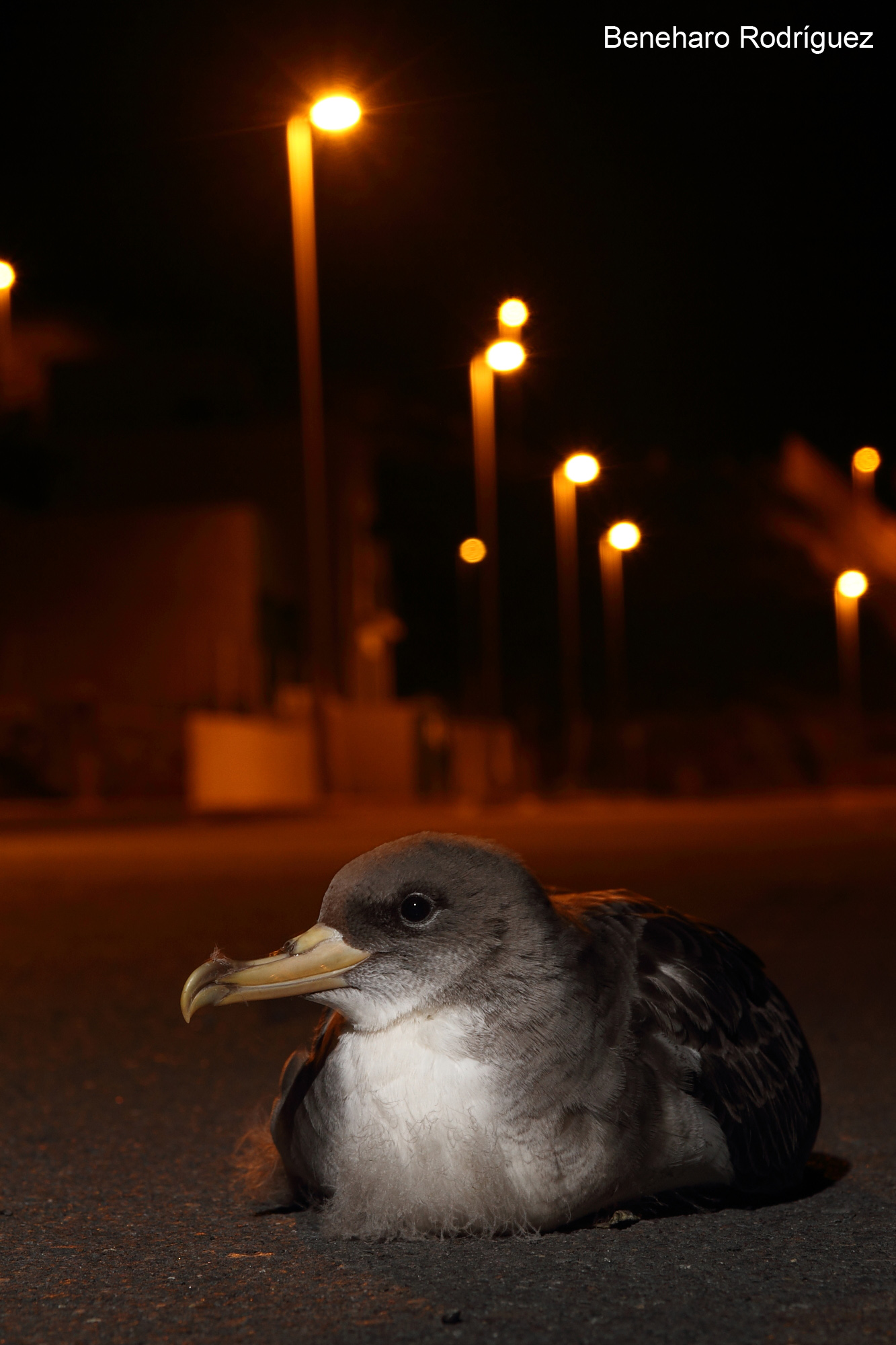 The focus of the study; a Cory's Shearwater grounded by lights; photograph by Beneharo Rodríguez
The focus of the study; a Cory's Shearwater grounded by lights; photograph by Beneharo Rodríguez
Elizabeth Atchoi (Institute of Marine Sciences - OKEANOS, University of the Azores, Portugal) and colleagues have published in the Journal of Experimental Biology a behavioural analysis of light exposure on Cory’s Shearwater chicks to determine factors influencing vulnerability to light pollution in seabirds.
The paper’s abstract follows,
“Light pollution critically affects fledglings of burrow-nesting seabirds, leading to massive mortality events. The successful management of this pollutant depends upon a comprehensive understanding of the factors influencing visual sensitivity and corresponding behaviours towards light. Factors shaping the development of the visual system could account for variation in seabirds' vulnerability to light pollution. We investigated how Cory's shearwater chicks respond to selected contrasting artificial light stimuli. Chicks were subjected to blue and red light treatments, and repeatedly tested throughout the nestling period. We analysed behavioural responses (number, timing and orientation of reactions) to determine how age, exposure to experimental light stimuli and spectra influenced the onset of visually guided behaviours, thus inferring drivers of vulnerability to light pollution. Repetitive exposure to light significantly increased the number of reactions, and chicks predominantly displayed light avoidance behaviour. We did not find differences in the number of reactions, timing and orientation between blue and red light treatments. The responses did not differ across different age groups. These results provide empirical evidence for the contribution of the light available in the rearing environment to seabird visual development. They support the hypothesis that differential exposure to light during the growth period influences responses to artificial light, and that the state of visual development at fledging could be a main driver of the age bias observed during seabird fallout events. It is thus important to evaluate lighting schemes in both urban and natural areas, and determine the as yet unknown consequences that may be affecting the populations.”
Reference:
Atchoi, E., Mitkus, M., Vitta, P., Machado, B., Rocha, M., Juliano, M., Bried, J. & Rodríguez, A. 2023. Ontogenetic exposure to light influences seabird vulnerability to light pollution. J Exp Biol. 226 (7): jeb245126. doi: https://doi.org/10.1242/jeb.245126
5 May 2023

 Français
Français  English
English  Español
Español